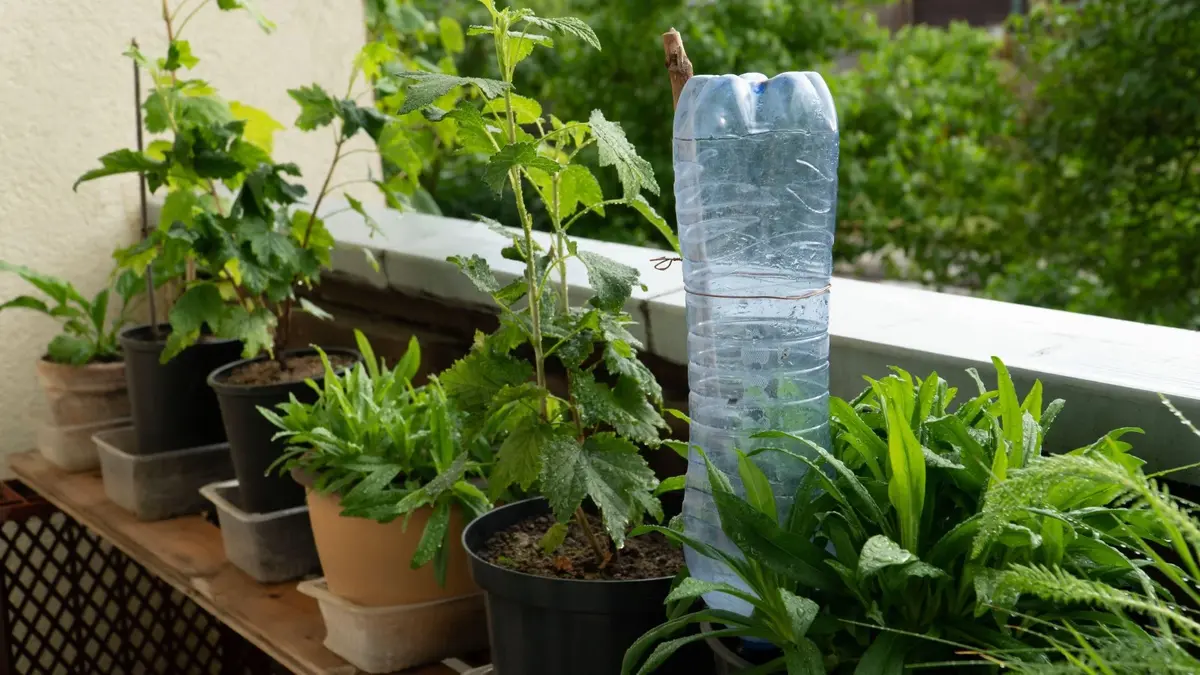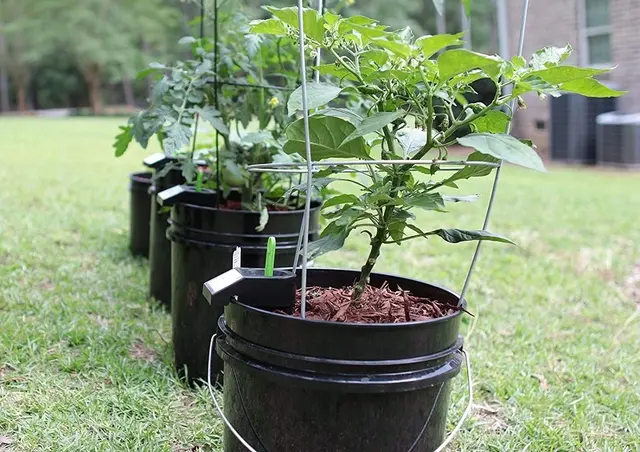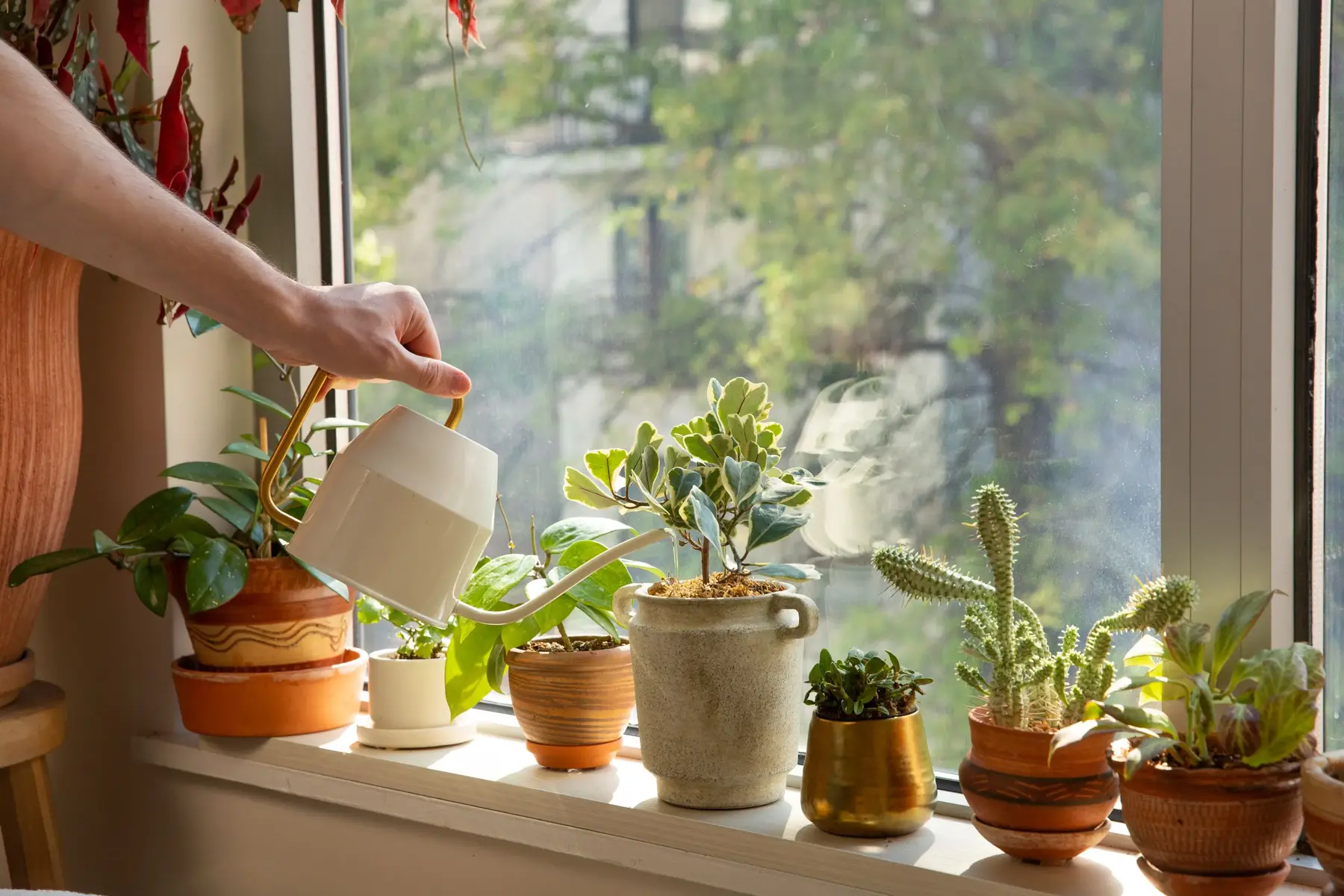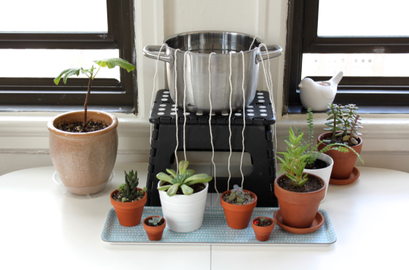Contents
Introduction
Are you tired of constantly worrying about whether your apartment plants are getting enough water? If you’re like many apartment dwellers, juggling a busy lifestyle with keeping your plants healthy can be a real challenge. Luckily, there’s a simple solution that can make your life a whole lot easier: DIY plant watering systems!
A DIY plant watering system is a handy setup you can create yourself to make sure your plants get just the right amount of water they need, even when you’re not around. Whether you’re away on vacation, have a hectic work schedule, or simply want to save yourself from daily watering chores, these systems are designed to be low-maintenance and effective.
So, why should you consider setting up a DIY watering system in your apartment? For starters, it’s all about convenience and efficiency. Imagine not having to worry about forgetting to water your plants or coming home to wilted leaves. With a well-designed watering system, your plants will stay happy and healthy with minimal effort on your part.
Not only does it save you time and hassle, but creating your own watering system can also be quite cost-effective. Instead of buying expensive pre-made systems or relying on store-bought solutions, you can use simple materials and a bit of creativity to craft a watering system that fits your specific needs. Plus, it’s a fun DIY project that can add a personal touch to your apartment garden.
In this guide, we’ll walk you through the basics of DIY plant watering systems, show you different types you can create, and provide easy-to-follow steps for setting them up. We’ll keep things straightforward and practical, so you don’t need to be a gardening expert to get started. By the end, you’ll have all the knowledge you need to keep your apartment garden thriving with minimal effort. Let’s dive in and make plant care a breeze!
Understanding the Basics
When it comes to keeping your apartment garden flourishing, understanding the basics of plant watering systems is key. If you’re new to this concept, don’t worry! We’ll break it down into simple terms so you can get a clear picture of how these systems work and why they’re so beneficial.
Why DIY Watering Systems?
You might be wondering, “Why should I bother with a DIY watering system?” The answer is simple: convenience and cost savings. Instead of spending money on store-bought watering solutions or stressing over your plants while you’re away, you can create a system tailored to your needs. DIY systems are budget-friendly and can be customized to fit any space, no matter how small your apartment might be.
Creating your own system also means you have full control over how it works. You can adjust it based on your plants’ needs and your schedule, making sure that your plants get just the right amount of water. It’s like having a personal watering assistant without the hefty price tag!
Key Factors to Consider
Before diving into your DIY project, it’s important to think about a few key factors to ensure you choose the right system for your space and plants:
- Plant Types and Their Watering Needs: Different plants have different water requirements. Some thrive on lots of moisture, while others prefer to dry out between waterings. Knowing what your plants need will help you design a system that meets their specific demands.
- Apartment Environment: Your apartment’s environment can affect how often your plants need watering. Factors like light levels, temperature, and humidity all play a role. For instance, a sunny windowsill might dry out soil faster than a shadier spot. Understanding these conditions will help you tailor your watering system to work efficiently in your unique space.
With these basics in mind, you’re ready to explore the different types of DIY plant watering systems available. Whether you’re interested in drip irrigation, self-watering planters, or other creative solutions, we’ll guide you through each option so you can find the perfect fit for your apartment garden.
Types of DIY Plant Watering Systems
Ready to dive into the world of DIY plant watering systems? Great! There are several options you can explore, each with its own benefits and quirks. Whether you’re a newbie or a seasoned plant parent, these systems can help keep your apartment garden thriving with minimal effort. Let’s break down the most popular types of DIY watering systems in a way that’s easy to understand.

Drip Irrigation Systems
Drip irrigation is a method where water is delivered directly to the roots of your plants through a network of tubing and small emitters. Think of it as a slow and steady way to keep your plants hydrated.
- What You Need: Tubing, emitters (small devices that control the water flow), stakes to hold the tubing in place, and connectors to join the parts together.
- How It Works: You set up the tubing to run from a water source to your plants. The emitters will release small amounts of water directly onto the soil or plant roots. This targeted approach helps prevent overwatering and ensures that each plant gets the right amount of water.
- Pros and Cons: Drip irrigation systems are efficient and great for precise watering. However, setting them up might take a bit of effort, and they can get clogged if not maintained properly.
Self-Watering Planters
Self-watering planters are pots that have built-in reservoirs to keep the soil moist. They’re perfect for busy folks who want to reduce their watering routine.
- What You Need: Planters with a reservoir, wicking material (like fabric or rope) to draw water from the reservoir into the soil.
- How It Works: These planters have a compartment at the bottom that holds water. The wicking material helps draw water up from the reservoir into the soil as needed. This means the plants get a consistent supply of moisture without you needing to water them every day.
- Pros and Cons: They’re low-maintenance and reduce the risk of overwatering. However, they can be limited by the size of the planter and might not be suitable for all types of plants.
Capillary Mats
Capillary mats use a special type of fabric that pulls water from a reservoir to the plants through capillary action. It’s like having a water-sucking sponge under your plants.
- What You Need: A capillary mat, a tray or container to hold the mat, and a water source.
- How It Works: You place the mat in a tray and position your plants on top of it. The mat absorbs water from the tray and gradually delivers it to the plant roots through the soil. This method works well for plants that need consistent moisture.
- Pros and Cons: Capillary mats are simple to set up and maintain. They may not be the best option for plants with very different water needs or for very large pots.
Gravity-Based Watering Systems
Gravity-based systems use the force of gravity to deliver water from a container to your plants slowly. It’s a straightforward approach that works well for a variety of plant setups.
- What You Need: A water container, tubing, and a drip mechanism to control the water flow.
- How It Works: You place the container above your plants and connect it to the tubing. Water flows through the tubing and drips out at a controlled rate, thanks to the gravity pulling it down. You can adjust the flow to suit your plants’ needs.
- Pros and Cons: These systems are easy to set up and require minimal maintenance. However, you’ll need to refill the container regularly, and they might not be suitable for very large or many plants.
Each of these DIY watering systems has its own set of benefits and can be tailored to fit your specific needs. Whether you choose a drip irrigation system for precision, a self-watering planter for ease, a capillary mat for simplicity, or a gravity-based system for flexibility, you’ll find that setting up one of these systems can make your plant care routine much more manageable. Let’s move on to the step-by-step guides for building each system and get you started on keeping your apartment garden lush and happy!
Step-by-Step Guides for Each System
Now that you have a good grasp of the different types of DIY plant watering systems, let’s get into the nitty-gritty of how to build each one. We’ll walk you through the process for each system, making sure to keep things clear and straightforward. By the end, you’ll have a working watering system that suits your apartment garden perfectly!
Drip Irrigation System
Setting up a drip irrigation system might sound complex, but with these easy steps, you’ll have it up and running in no time.

- Preparation:
- Gather your materials: tubing, emitters, stakes, and connectors.
- Measure the distance from your water source to where your plants are located. This helps you cut the tubing to the right length.
- Assembly:
- Cut the tubing to fit the space between your water source and plants.
- Attach emitters to the tubing. The emitters control how much water each plant receives. You can adjust them to suit different plant needs.
- Secure the tubing in place using stakes to keep it from shifting.
- Connect the tubing to your water source and test the system to make sure water flows correctly and reaches all your plants.
- Maintenance:
- Regularly check for clogs in the emitters and clean them as needed.
- Ensure the tubing is free from kinks or damage that could affect water flow.
Self-Watering Planters
Self-watering planters are great for reducing your daily watering routine. Here’s how to set one up:

- Preparation:
- Choose planters that have built-in reservoirs or purchase a self-watering insert.
- Get some wicking material, such as cotton rope or fabric strips.
- Assembly:
- If using a self-watering insert, place it into your planter according to the instructions.
- Install the wicking material. This usually involves placing one end of the wick into the reservoir and the other end into the soil.
- Fill the reservoir with water. The wicking material will draw the water up into the soil as needed.
- Maintenance:
- Check the water level in the reservoir regularly and top it up as needed.
- Monitor the wick to ensure it’s still functioning well and replace it if it becomes clogged or worn out.
Capillary Mats
Capillary mats are a simple and effective way to keep your plants hydrated. Follow these steps to set one up:
- Preparation:
- Select a capillary mat that fits the size of your tray or container.
- Make sure you have a tray or container that can hold water beneath the mat.
- Assembly:
- Place the capillary mat in the tray and position your plants on top of it.
- Fill the tray with water. The mat will absorb the water and gradually deliver it to the plants through the soil.
- Maintenance:
- Keep an eye on the water level in the tray and refill it as necessary.
- Clean the mat periodically to prevent algae or mold buildup.
Gravity-Based Watering System
A gravity-based watering system is both straightforward and effective. Here’s how to set one up:
- Preparation:
- Gather a water container, tubing, and a drip mechanism (like a dripper or valve).
- Measure the height of where you’ll hang the container and the length of tubing needed.
- Assembly:
- Fill the container with water and place it at a higher elevation than your plants (e.g., on a shelf or a stand).
- Connect the tubing to the container and secure it with a drip mechanism to control the flow of water.
- Position the other end of the tubing near your plants. Adjust the drip rate to ensure each plant receives enough water.
- Maintenance:
- Regularly check the water level in the container and refill it as needed.
- Adjust the drip mechanism if you notice any changes in water flow or if plants need more or less water.
With these step-by-step guides, you’re all set to create a DIY plant watering system that fits your needs and keeps your apartment garden healthy. Choose the system that works best for you, follow the instructions, and enjoy the convenience of less frequent watering and thriving plants!
Tips for Maximizing Efficiency
Once you’ve set up your DIY plant watering system, the next step is to ensure it’s running as efficiently as possible. Properly maintaining and optimizing your system will help keep your plants healthy and save you time and effort. Here’s how to get the most out of your watering setup:
Choosing the Right System for Your Space
Selecting the perfect watering system depends on your apartment’s layout and the specific needs of your plants. Here’s how to choose wisely:
- Consider Plant Types: Different plants have different water needs. For example, succulents and cacti need less water compared to tropical plants. Make sure the system you choose matches the watering requirements of your plants. Drip irrigation works well for diverse plant types, while self-watering planters are ideal for plants that prefer consistent moisture.
- Evaluate Your Apartment Layout: Think about where you’ll place your watering system. If space is tight, self-watering planters or capillary mats might be more practical. If you have a bit more room, a drip irrigation system could cover multiple plants efficiently.
- Budget and Complexity: Your budget and willingness to tinker with the system also matter. Simple solutions like capillary mats or self-watering planters might be more affordable and require less setup, while drip irrigation systems and gravity-based setups might involve a bit more investment and assembly.
Optimizing Water Usage
Getting the right amount of water to your plants without wasting any is crucial. Here’s how to make sure your system is working efficiently:
- Adjusting Systems: If you notice that some plants are getting too much or too little water, adjust the flow rates or emitter placements accordingly. For drip irrigation systems, you can change the emitters or tubing setup to better suit your plant’s needs. For self-watering planters, ensure the wick is positioned correctly to deliver consistent moisture.
- Scheduling Watering Times: If your system allows for it, set up a watering schedule to ensure your plants receive water at optimal times. Some advanced systems come with timers, but even with simpler setups, you can manually adjust the frequency of refills or water supply.
- Water Conservation Tips: Consider using rainwater or filtered water to reduce waste and provide your plants with cleaner hydration. Collecting rainwater in a barrel or using a water-saving device can make your watering system even more eco-friendly.
Monitoring and Troubleshooting
Regular checks and maintenance will keep your watering system running smoothly. Here’s what to look out for:
- Common Issues: Keep an eye out for common problems such as clogged emitters, uneven watering, or leaks. These issues can disrupt the water flow and affect your plants’ health.
- Solutions: If you encounter clogs, clean the emitters or tubing as needed. For uneven watering, adjust the placement of tubing or emitters to ensure all plants receive adequate moisture. Leaks can often be fixed by tightening connections or replacing damaged parts.
By keeping these tips in mind, you can ensure your DIY plant watering system remains efficient and effective. Proper setup, regular maintenance, and a bit of fine-tuning will help your plants thrive with less hassle and more consistency. Happy gardening!
Conclusion
Congratulations! You’ve now got a solid understanding of DIY plant watering systems and how they can transform your apartment gardening routine. With the knowledge you’ve gained, you’re well-equipped to set up a system that fits your needs and keeps your plants healthy and happy.
Summary of Benefits
Let’s recap why investing in a DIY watering system is a game-changer for your apartment garden:
- Convenience: Imagine never having to worry about daily watering chores. A well-designed watering system means you can go about your busy life, knowing your plants are getting the care they need without constant attention.
- Cost-Effectiveness: DIY systems are budget-friendly and often more affordable than store-bought options. Plus, you can customize them to fit your specific needs and space, saving you money in the long run.
- Healthier Plants: Consistent watering helps prevent overwatering and underwatering, two common issues that can stress plants. With a reliable watering system, your plants will have a steady supply of moisture, promoting healthier growth and vibrant foliage.
Encouragement to Experiment
Don’t be afraid to experiment and find what works best for you. Each apartment garden is unique, so you might need to tweak your system or try different approaches to get the perfect setup. Whether you opt for a drip irrigation system, self-watering planters, capillary mats, or a gravity-based system, there’s no one-size-fits-all solution. The key is to tailor the system to your plants’ needs and your lifestyle.
Feel free to mix and match elements from different systems to create a setup that works best for your specific situation. And remember, gardening is as much about learning and adapting as it is about following a set plan.
With your new DIY watering system in place, you can enjoy a thriving garden with less hassle and more time to enjoy the beauty of your plants. So go ahead, set up your system, and watch your apartment garden flourish!
Call to Action
Ready to get started? Gather your materials, choose the system that fits your needs, and dive into your DIY project. Your plants will thank you for the extra care, and you’ll appreciate the convenience of a well-maintained watering system.
And once you’ve set up your system, share your results and tips with others. Join gardening communities, post about your setup, and help fellow apartment gardeners find their perfect watering solutions. Happy gardening!



